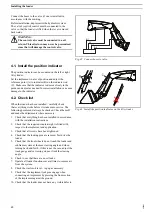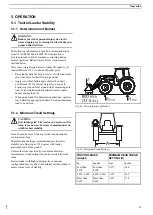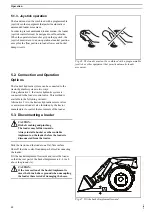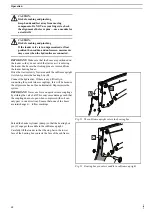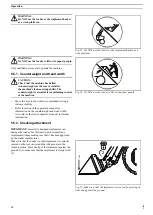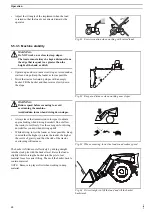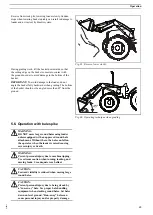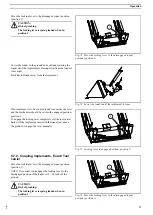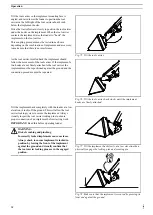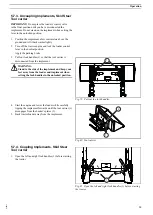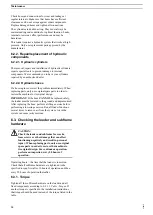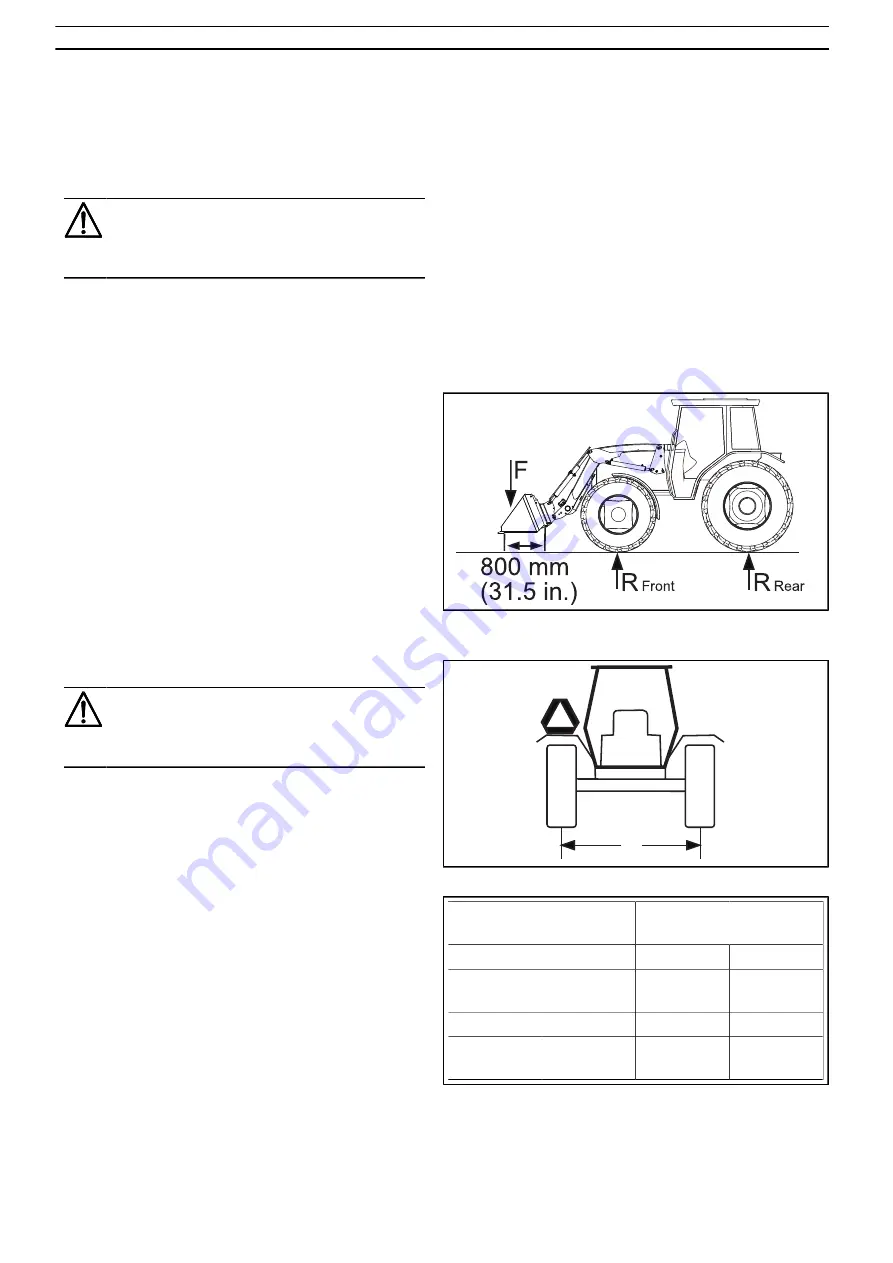
Operation
214811
21
5. OPERATION
5.1. Tractor/Loader Stability
5.1.1. Determination of Ballast
WARNING:
Reduce the risk of personal injury due to the
tractor tipping over or losing traction. Make sure
proper ballast is fitted.
The following information is based on recommendations
from ASAE EP562 March 2005. The information is
provided to reduce risk of machine overturning during
normal operation. Ballast tractor to meet requirements
outlined below.
Place mass (weight) equivalent to loader lift capacity (F)
located 800 mm (31.5 in.) ahead of bucket pivot.
•
Raise loader until bucket pivot is level with loader arm
pivot (bucket in farthest forward position).
•
Apply rear wheel ballast and/or ballast box until
a minimum of 25% of total weight is on rear axle.
Tractor must be on level ground while measuring axle
load. Total weight includes ballasted tractor, loader,
bucket and payload (F).
•
When using loader for dedicated applications, operator
may determine appropriate ballast, based on maximum
load to be carried.
Fig. 44 Determination of Ballast
5.1.2. Minimum Tread Settings
CAUTION:
Overturning risk. The tractor can overturn if its
track is too narrow. Increase to maximum track
width for best stability.
Tread should be set as wide as practical considering the
environment of use.
Minimum tread settings recommended provide static
stability on a side slope of 15 degrees with loader
positioned just off the ground.
Unless otherwise specified by tractor manufacturer,
minimum rear tread settings should be selected from the
table.
Tractor/loader with high center gravity or unusual
configuration may require wider minimum tread setting to
achieve same level of stability.
A
Fig. 45 Minimum Tread Settings
TRACTOR MASS
(weight)
MINIMUM REAR TREAD
SETTING (A)
kg
pounds
mm
inches
Less than
2,250
Less than
4,960
1,575
62.0
2,250–3,650 4,950–8,030 1,675
65.9
More than
3,650
More than
8,030
1,825
71.8
Содержание 611TL
Страница 2: ......














